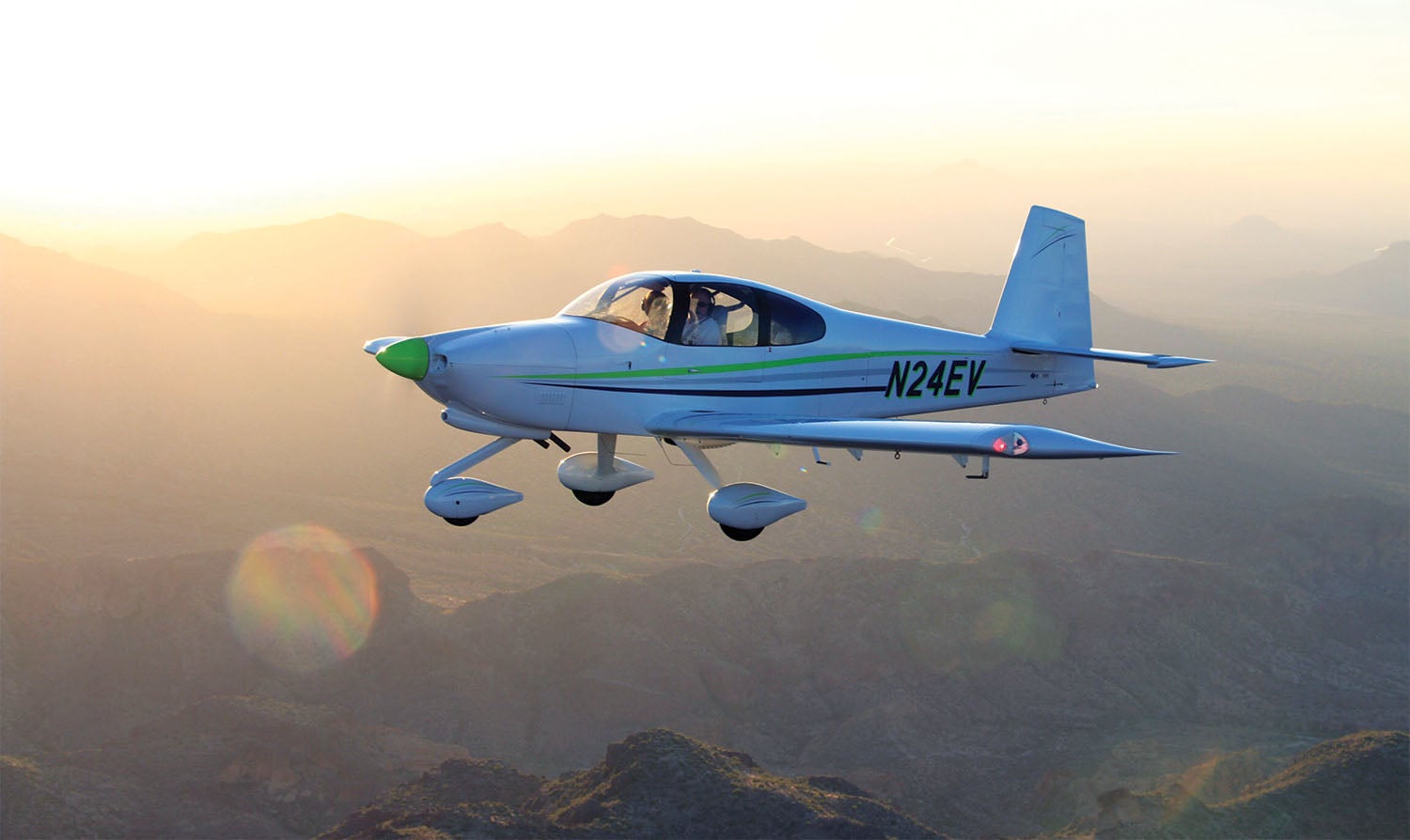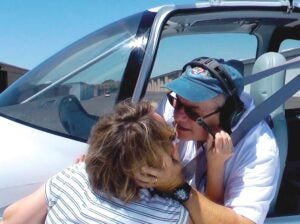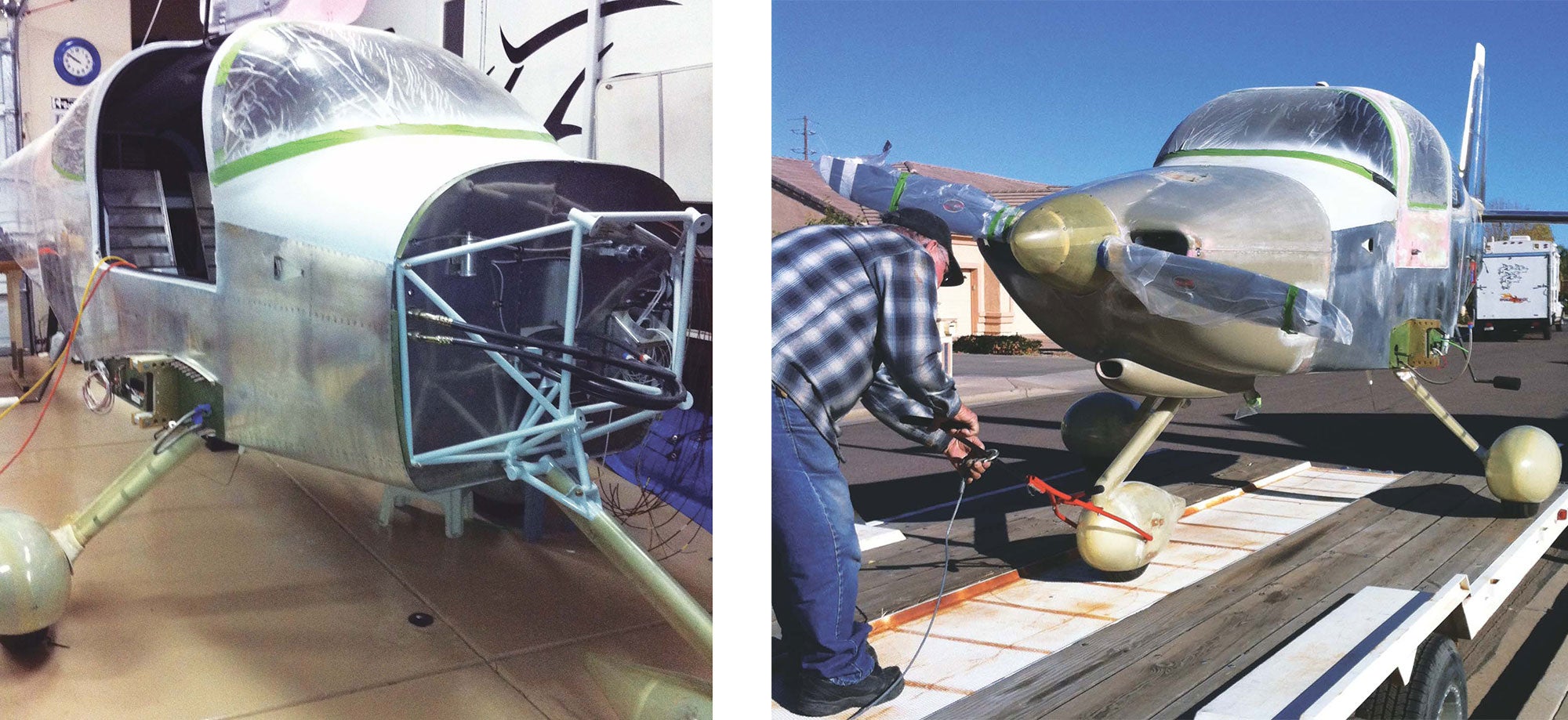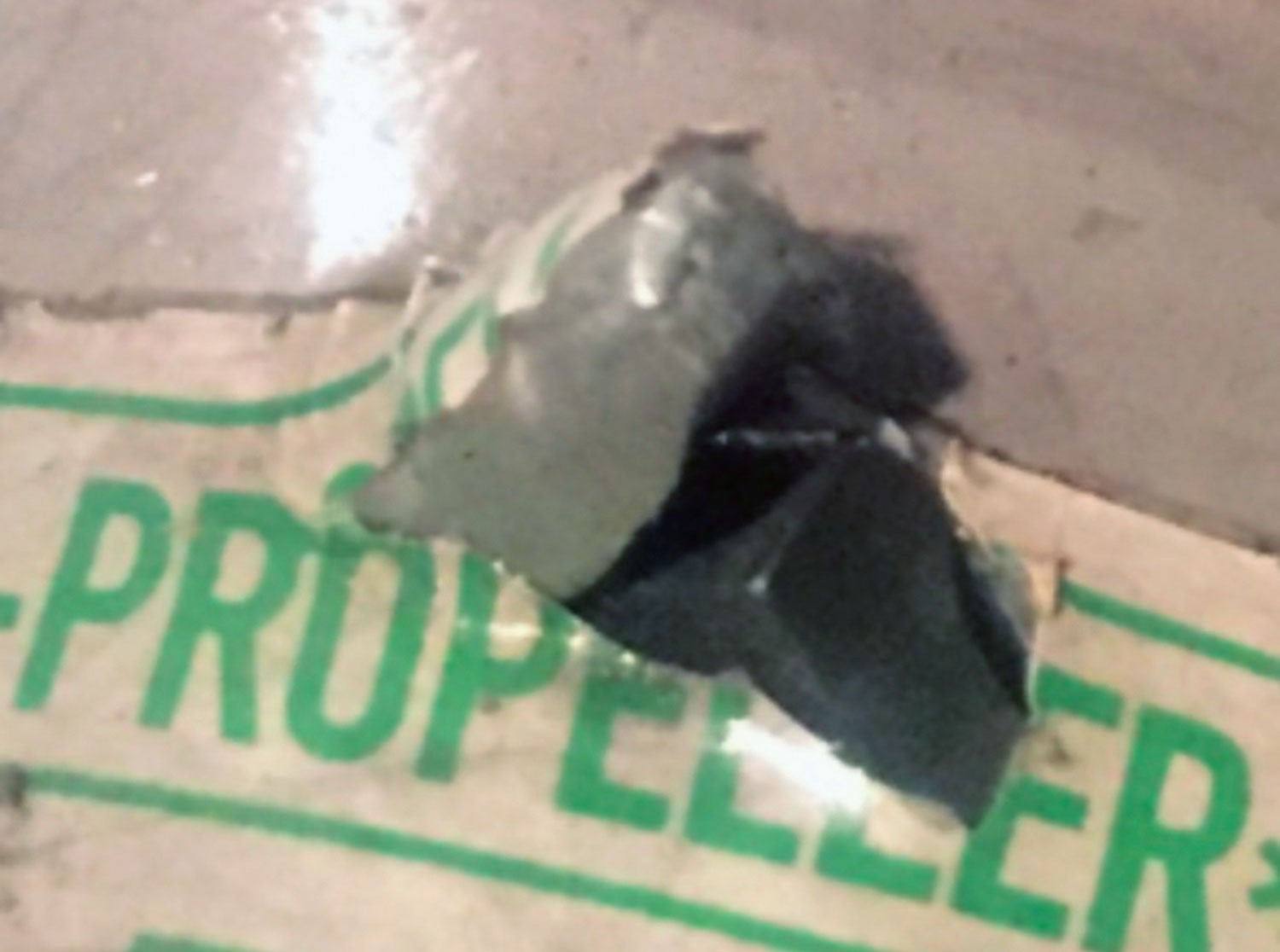 I am starting this composition on May 14, 2024, which happens to be the 10th anniversary of the first flight of N24EV, my personally built Van’s RV-10. Since every flight the airplane has made over the last 10 years has been logged into the aircraft logbook, going back over the logbooks has been a rewarding trip down memory lane.
I am starting this composition on May 14, 2024, which happens to be the 10th anniversary of the first flight of N24EV, my personally built Van’s RV-10. Since every flight the airplane has made over the last 10 years has been logged into the aircraft logbook, going back over the logbooks has been a rewarding trip down memory lane.

I have thought back to not only the past 10 years but also back approximately 18 years when I first decided to build the airplane and the choices that had to be made once the build commitment had been made.
The Data
In the first 10 years of its existence, the airplane has logged the following into its EFIS memory: 949.7 hours in Hobbs time, 830.5 by tach time and 773.0 hours in flight. It’s powered by a Barrett Precision Engines IO-540 built to Lycoming D4A5 specs—the spec Van’s recommends—and a Hartzell “blended airfoil” two-blade aluminum propeller.
Routine consumables over the last decade include the following: six Monster retread tires, four mains and two noses. Three sets of brake pads (standard Van’s/Cleveland). Four K&N air filters (I clean each one once and replace it every other year). I’ve replaced two ship’s batteries, the second replacement upgraded to an EarthX lithium battery. I also replaced two ACK ELT batteries due to expiration. I’ve recently replaced all firewall-forward fluid hoses. They were replaced at 10 years time in service recommendation rather than condition.

I’ve poured 182 bottles of Philips X/C 20W-50 oil, either consumed or replaced on schedule. I started out filling to the maximum of 12 quarts at the beginning and did the first couple of changes at 25 hours. Over time, I slowly transitioned to changing the oil at roughly 50 hours and replenishing to 7 quarts, only adding with 6 quarts shown on the dipstick. From experience, I have learned that anything above 6.5 on the dipstick will eventually be wiped off of the belly. Usually by me.
Failures, Replacements, Upgrades
I started with two first-generation Dynon Skyview screens, a Dynon com, a Dynon transponder, Dynon (single channel) ADS-B and Dynon autopilot servos for pitch and roll. They were mated to a PS Engineering audio panel and a Garmin GNS 430W through an ARINC 429 module. Over time, I’ve had one servo replaced under warranty due to failure and upgraded the pitch servo to linear throw for a nominal fee. I had one servo shear-pin failure, which was upgraded by Dynon to a more robust unit.

I added the Dynon yaw damper servo assembly and upgraded to the dual-channel ADS-B when each became available. I exchanged one of the EFIS screens due to a serial number recall and the com head unit due to failure (also covered under warranty). I also replaced the original Dynon sensor package with the upgraded Kavlico package due to a service bulletin.
Without a doubt, the biggest mechanical issue that I have experienced over the last decade was the in-flight failure of the MT prop governor (860-3), which resulted in an emergent diversion to an alternate field. About half a dozen of us users of the same model prop governor had catastrophic failures within a relatively short time. My failure occurred about one week after the previous one and a week before the service bulletin was issued. The results of this incident resulted in a removal and teardown of the engine for inspection by Barrett, which was covered by insurance.
It is important to note that this issue had nothing to do with Van’s, the RV-10 as a model, Lycoming or Barrett. It was an MT manufacturing issue coupled with unfortunate luck. Several but not all of the airplanes involved were RV-10s but to my knowledge no major damage or injuries were involved.
Firewall forward, I’ve replaced one Plane-Power alternator (warranty), one Sky-Tec starter and one Lycoming mechanical fuel pump, all due to failures or impending failures. Incentivized by failure, I added a B&C Specialty Products 30-amp standby alternator on the accessory case. I also replaced one of the original Bendix 1200-series magnetos with an E-MAG electronic ignition system.
About the Airframe
The Van’s airframe has been robust and trouble-free. I have complied with all of the (few) service bulletins the airframe has received, but have never found any incidence of cracks in those occasions where cracks were the reason for the SB. In fact, over the last decade, I have never had a failure of any part or component that is considered OEM by Van’s Aircraft. The only addition to the airframe that I have made that hasn’t already been highlighted was upgrading the wingtip landing lights to leading-edge LED lights by Flyleds.

Use and Enjoyment
Over the nearly 1000 hours logged on the airplane over the past decade, there are a few logbook stats that readers, especially those either still building or those considering a build, hopefully find interesting.
The airplane has landed at 72 different airports, from dirt strips to major international airports. Seven of the airports were in Mexico (before the unfortunate banishment of Experimentals). The Mexico flying was primarily in support of the Phoenix chapter of the Flying Samaritans organization, for which we flew 17 very rewarding trips.
We’ve flown five trips to AirVenture, staying each time at homebuilt camping. Out of those five trips, the only anomaly encountered was the previously mentioned loss of an alternator requiring an unplanned RON in Hays, Kansas, while Plane-Power overnighted us a replacement.

We’ve carried 151 separate individuals as passengers in the aircraft, of whom 26 were Young Eagles. We’ve also flown seven demo flights with potential builders. We’ve made three rescue/assistance flights (very rewarding), three guided group tours of the Grand Canyon/Lake Powell/Monument Valley region, two trips to Catalina Island and one trip each for a wedding, funeral and high school reunion.
We have also made two very rewarding flights to airplane camp on the centerline of the path of totality of solar eclipses. The first one was at Rexburg, Idaho, in 2017 and the second one at Sulphur Springs, Texas. Those are some of the most rewarding trips we’ve ever done.
The majority of the rest of our flight time has been commuting between our primary home base of Mesa Falcon Field (KFFZ) to our mountain airpark home at Mogollon Airpark (AZ82). The airplane cuts the two-and-a-half-hour drive to a convenient and scenic 30-minute flight.
The point that I want to stress with the trip summation is that the RV-10 is very much a capable traveling machine and not just a Sunday flier.

Decision Points
Before and during the build, I made countless decisions, some big and some small. I’m often asked if I would stand behind those decisions. For the most part, yes. Let’s break that down.
One of the major decisions is propulsion. When I was faced with that decision, believe it or not, there were actually more choices available than today. There was the “safe” choice of going with the Lycoming IO-540 engine that the airplane was designed around, either in new form from the factory or rebuilt form from one of the few choice shops. However, back in the day there was also a much-hyped Subaru option and a couple of automotive V-8 conversions vying for buyers with all kinds of blue-sky performance promises and (comparatively) low price points. I looked at all of them, and I count my lucky stars that I didn’t get lured into the hype. Without going into detail, I don’t think that any of the two or three dozen builders that (publicly) went automotive-based are still flying without eventually converting to Lycoming.
I have been very happy with my Barrett engine. If/when my engine time is up, before my personal stick time is up, I will likely either have Barrett build me another one or use my factory certificate for a new Lycoming. While many RV-10 builders are opting for composite three-blade props, I’m quite happy with my two-blade metal Hartzell.
Probably one of the most controversial things I did was build with air conditioning. In my case, I went with the Airflow Systems package and they have been great to work with. Installing A/C had its naysayers back then and it has them now. Living in Arizona, it has been a godsend for me and the enjoyment of my family and passengers. For an RV-10 or similar, I would do it again, no question. I also recommend the Aerosport Products overhead console with extra air vents, even if you don’t go with air conditioning.
I made my major build decisions during the transition from the old steam generation to the new glass panels. I came very close to buying a complete Blue Mountain EFIS. Boy, did I ever dodge a bullet there. I ended up with a first-generation Dynon SkyView that I have been very happy with. My system has features that even brand-new Boeings don’t enjoy. The system has been reliable and the integral autopilot is amazing considering the cost. Someday I will probably upgrade to newer versions, but I haven’t felt compelled to do so yet.
Closing Thoughts
The airplane has far exceeded my wildest expectations. All airplanes are a compromise of some sort or another, especially multi-mission platforms like the RV-10. Quite frankly, at the risk of sounding like the marketing wing of Van’s, I honestly cannot think of another airplane that combines the speed, durability, efficiency, comfort, payload and value of the RV-10. All in a package that is easy to maintain and to fly. The fact that my airplane enjoys a fair market value of roughly twice what I have invested in it is just icing on the cake. I also appreciate my fortunate timing. A decade ago engines were much less expensive and other factors—Van’s increased prices and laser-cut-parts fiasco among them—had not yet materialized. It was different building an RV-10 then than it is now.
Owning an RV-10 changes the dynamic around my next airplane build. Put simply, there’s nothing that does so many tasks as well as the RV-10, especially when travel is factored into the equation. Why build something near it when you have the Goldilocks airplane already? No, the next airplane will be for those short local hops during the last half-hour of daylight just for the sheer joy of flying. Additionally, as I age, it will also be for when I don’t want, need or qualify for a first-class medical or full-coverage insurance.
For those of you still building, all I can say is stay with it. Keep banging those rivets and stringing those wires and sanding fiberglass. Before you know it, you’ll be passing your 10th anniversary in the air. For me, it sure went fast.
Here’s to the next decade!














Great article Myron. I really enjoyed reading this one.
Thanks for the very interesting read, honest and factual – good inspiration to others.